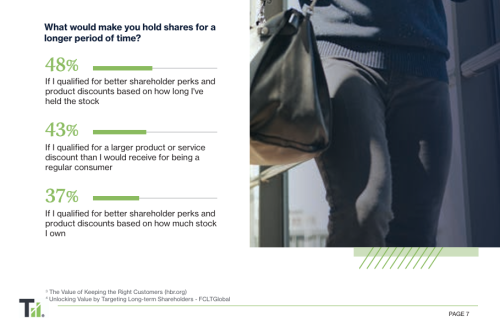Reflections from Lou Thompson on a quarter-century of IR to mark IR Magazine's silver anniversary
Congratulations to IR Magazine on its 25th anniversary as the leading global publication for the IR profession.
How extraordinary that on October 19, 1987 – otherwise known as Black Monday – just prior to the magazine’s launch, individual and institutional investors saw the Dow plummet 508 points, losing almost 23 percent of its market value in a single day, marking the end of a five-year bull market. I had celebrated my fifth anniversary as president and CEO of NIRI in September that same year and had never experienced anything like this.
I had celebrated my fifth anniversary as president and CEO of NIRI in September that same year and had never experienced anything like this.
I called the NIRI chairman, the legendary Mark Steinkrauss, who was head of IR for Digital Equipment Corporation (DEC), then a darling of Wall Street, that Monday afternoon. In his thick Bostonian accent, he said, ‘I can’t talk to you right now. My stock is in free fall.’
And free fall it was: DEC suffered the largest loss of any NYSE-traded company that day. Those who have looked back on the causes of the crash blamed the introduction of programmed trading, the interplay between the stock markets, index options and futures markets, and the fact that the trading markets were unable to handle the large flow of sell orders – something we saw again during the financial crisis of 2008.
Black Monday was a time when millions of retail investors left the market, many of them for good, and 1987 was the year the market shifted to one dominated by institutional investors.
That dynamic resulted in changing the face of IR to where we are today. When I joined NIRI my corporate board members were largely vice presidents of corporate communication with responsibility for IR. Most reported directly to the CEO.
In 1982 the NIRI board retained the executive search firm Russell Reynolds, which ultimately proposed me to the board based on my strong communications background as an assistant press secretary in the Ford White House, and head of communication for the American Enterprise Institute, the non-prescription drug industry association and the National Association of Home Builders.
Paradigm shift
With the shift to an institutional market, companies saw a need to staff their IR departments with people who had strong financial backgrounds to better serve the more sophisticated portfolio managers.
Along with that shift, a majority of IROs started reporting to the CFO, and today at most larger-cap companies that reporting relationship prevails.
It was also an era in which building sell-side analyst coverage was a top IR priority. Around 2006, with the change in the buy side’s remuneration for sell-side research, the brokerage firm analyst’s role had become more of a source of market intelligence; today it is even more important for providing senior management with access to the buy side by organizing non-deal roadshows.
NIRI became very active in the mid-1990s in legislative matters through my role as the media spokesperson for the business coalition. This brought about the 1995 Private Securities Litigation Reform Act to deal with the explosion of frivolous shareholder lawsuits occurring when firms missed their quarterly earnings estimates.
The coalition hired the Washington, DC-based PR firm Powell Tate, which gave me access to numerous appearances on cable news programs, primarily CNBC, and representation in the national print media.
My NIRI role in that respect continued following the downfall of Enron, Global Crossing and others accused of accounting fraud that resulted in Congress passing the Sarbanes-Oxley Act in 2002.
In 1999 NIRI chairman Jane McCahon –another Bostonian – and I worked with the SEC staff and commissioners to help craft Regulation Fair Disclosure as a rule IR professionals could live with. At the time, I also served on SEC chairman Arthur Levitt’s advisory committee.
Lifetime’s work
I was active in promoting the IR role in corporate governance while serving on Harvard University’s Corporate Governance Working Group and speeches before various institutional investor organizations.
In 1995 I worked with Dr Sarah Mavrinac of the Harvard Business School on her landmark study, ‘Measures that Matter’, sponsored by the Ernst & Young Center for Business Innovation.
This was the first major study documenting the value of communicating non-financial measures for the portfolio managers to incorporate in making their investment decisions.
In 2000 I was honored as the first recipient of IR Magazine’s award for lifetime achievement in investor relations. During my near quarter-century with NIRI, I saw many changes in the investor relations industry.
IR professionals today have greater access to the C-suite and the board of directors, and an increasing number are conducting one-on-ones on a solo basis with institutional investors – all of which suggests the IRO role continues to grow and play an important part in communicating the corporation’s value proposition to the investment community.
Lou Thompson is adjunct professor of communication at Germanna Community College in central Virginia, and former president and CEO of NIRI.










